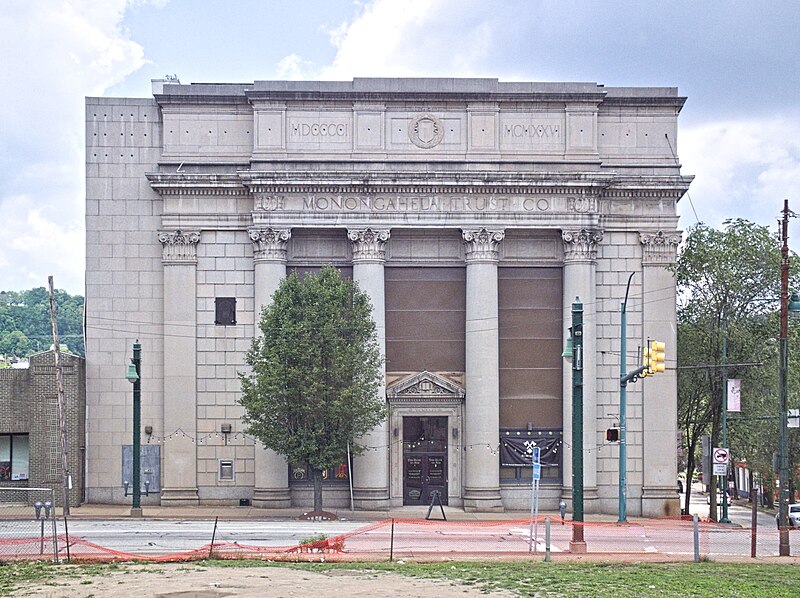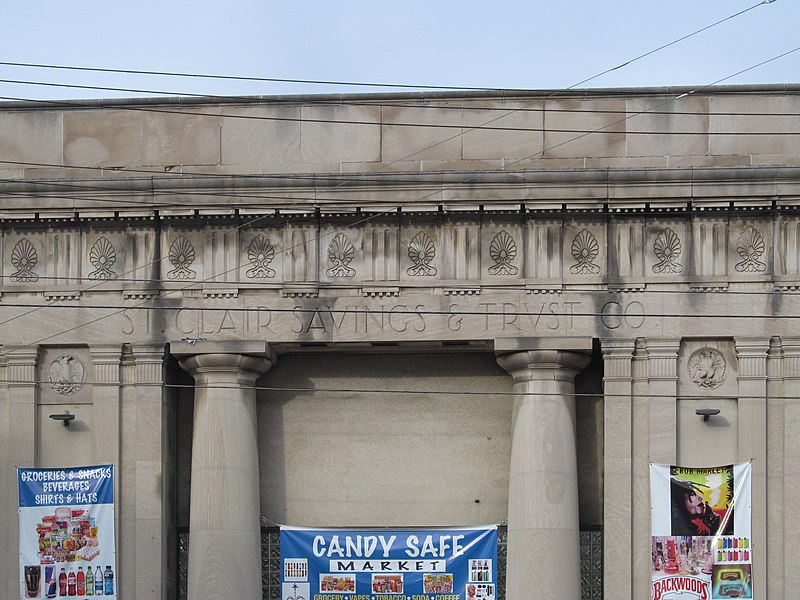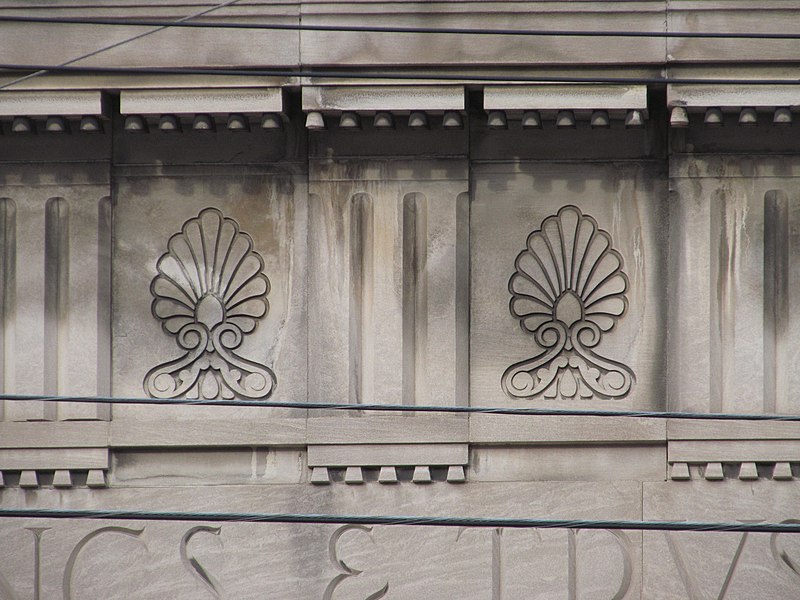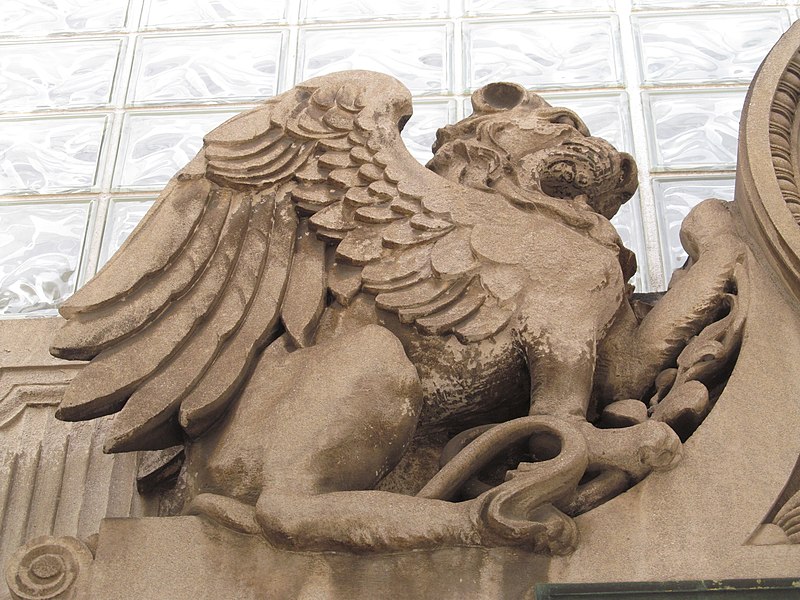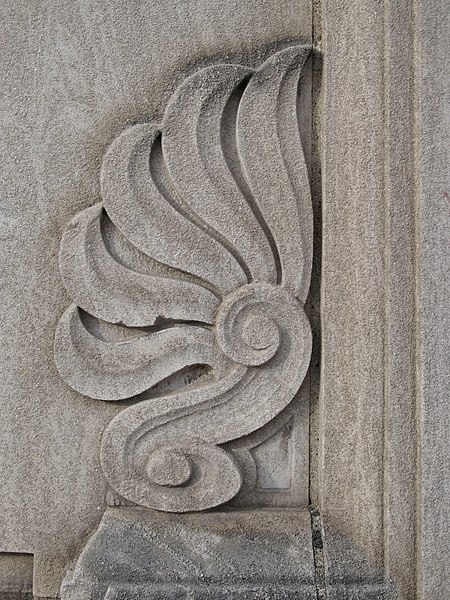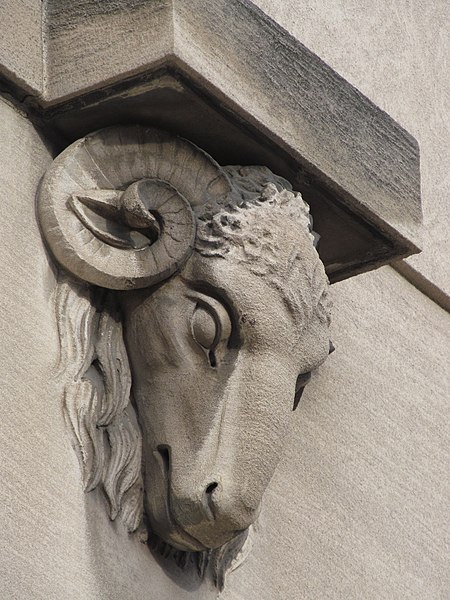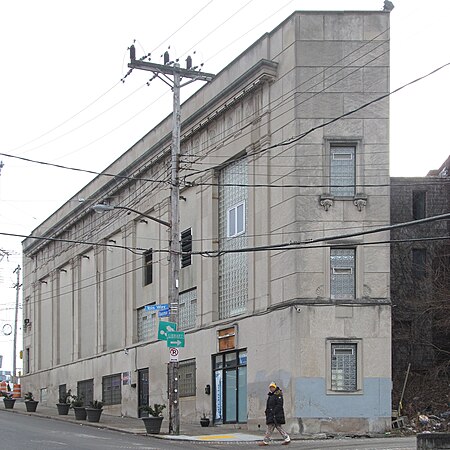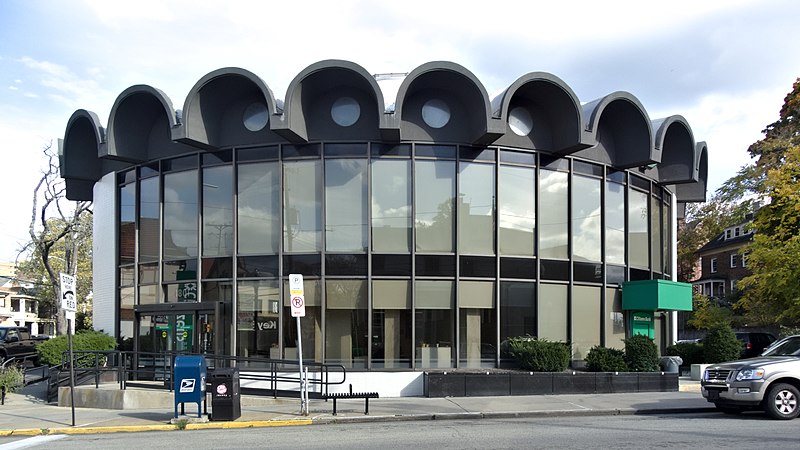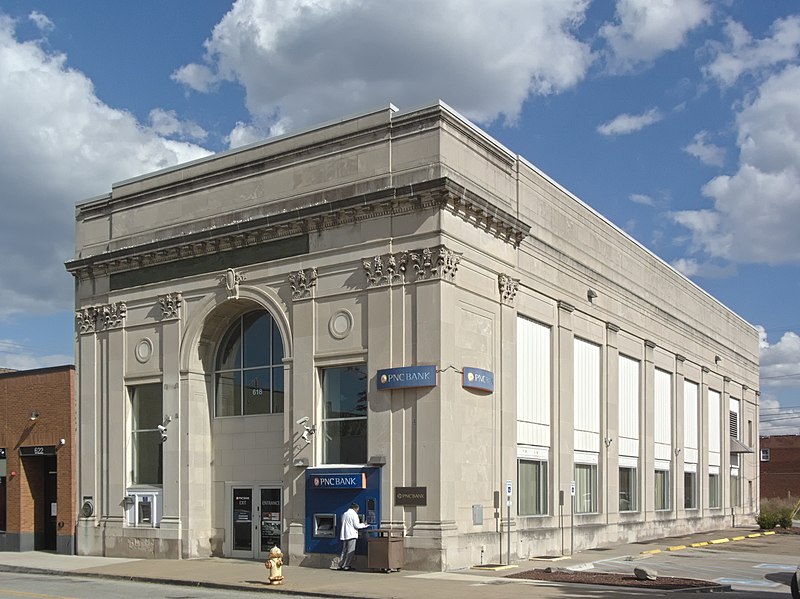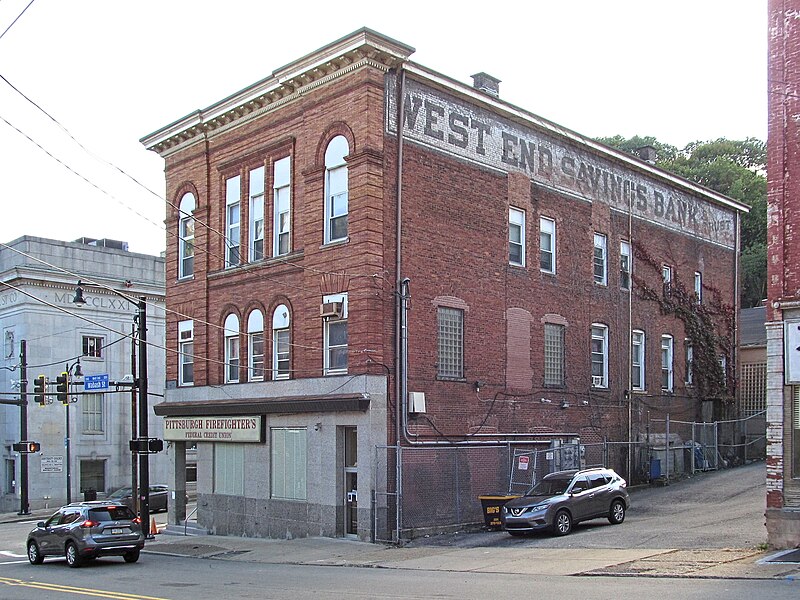
This building probably dates from the 1890s, and it looks from the style as though the well-preserved painted sign may date from the same era.

The building still belongs to a kind of bank and is kept in good shape, though its ground floor was unfortunately modernized back when that seemed like a good idea.
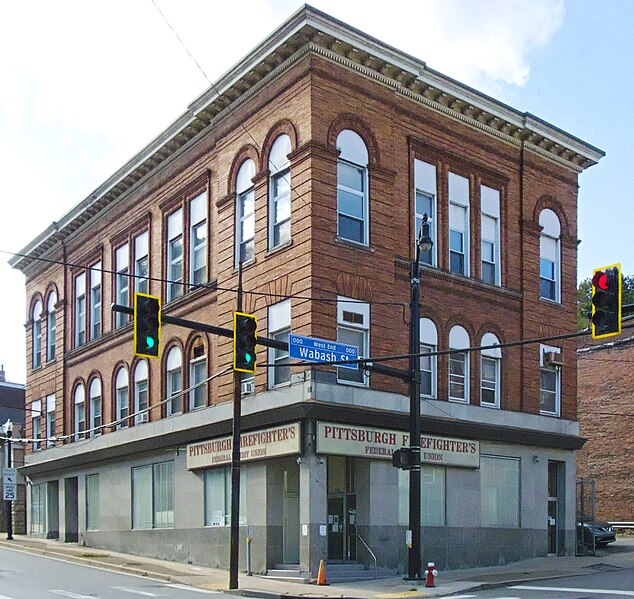

On the back, facing traffic coming down the hill from Noblestown Road, was another sign advertising the West End Savings Bank & Trust Co., but it was later painted over with an advertisement for Heselbarths Real Estate—Insurance.





